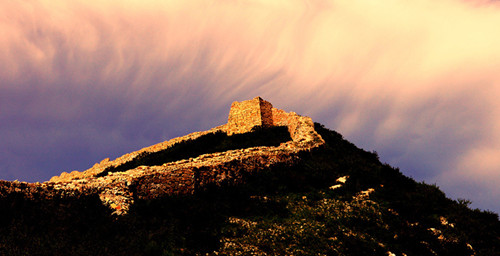Protection of the Great Wall needs to be improved
Author : WANG YU, LOU MENGLING Source : Chinese Social Sciences Today 2017-01-03

The Yangbian Great Wall snakes through the mountain. These sections of the ancient Great Wall are located in Huailai County, Hebei Province, about 100 kilometers west of Beijing. They were built in the Ming Dynasty and include the largest ancient post station in China.
The Great Wall is the largest and the most widely spread cultural heritage landmark in China. It is a spiritual symbol of the Chinese nation, a majestic engineering wonder and an incomparable element of the cultural landscape of human history. Protecting the Great Wall is a crucial element of preserving the greatness of Chinese civilization.
Grand, magnificent, spectacular, towering…These are the most commonly used adjectives to describe the Great Wall. These words capture the deep impressions of those famous Great Wall sections at Badaling, Shanhaiguan and Jiayuguan left on people. However, these well-known Great Wall sections only account for 5 percent of the total length of the various sections of the Great Wall across the country.
The rest are distributed throughout remote and steep mountain areas and even the desolate gobi desert. These unheeded Great Wall sections are called the “Wild Great Wall,” which refers to the parts of the Great Wall barely renovated, or those which were later developed for adventure tours. Now, due to the limitations imposed by a lack of funds, poor protection efforts and insufficient numbers of security guards, most of the Wild Great Wall sections suffer from corrosion caused by wind, rain or human destruction.
The Yangbian Great Wall, located in Xiaonanxinbao Town, Huailai County, Zhangjiakou City, Hebei Province, was constructed in the early Ming Dynasty. It stretches for approximately 3 kilometers and was constructed from large stones. Its construction technologies were among the best at that time. Yangbian Great Wall is still the best preserved section with the highest construction quality in the county.
However, even this solid part of the Great Wall cannot avoid the natural corrosion or damage caused by humans. The 1.5-meter-high crenels no longer exist, and some ramparts and parapets are badly damaged. Piles of rubble have accumulated and weeds grow. Multiple places have collapsed. Li Dingyuan, the curator of Huailai County Museum, said that in the 1960s and 1970s, some locals directly took stones from the Yangbian Great Wall to build their own houses. Although damage directly caused to the ancient fortifications by locals significantly decreased after the 1980s, the Great Wall has still suffered serious natural damage.
Facing this damage, local protectors of cultural relics feel powerless. The current protection efforts for the Great Wall still focus on improving the surrounding ecological environment. But these actions cannot play a substantive role in saving the damaged Great Wall.
Compared to other Wild Great Walls across the country, Yangbian Great Wall’s solid building materials and technologies mean it is still standing after years of damage.
“Most of the Wild Great Walls in the nation suffered much more serious damage than the Yangbian Great Wall. Some even lost the thick walls and only left zigzagging stone piles.” Zhang Yimeng, deputy director of the Institute of the Zhangjiakou Municipal Cultural Relics and Archaeology, indicated that the overall situation regarding the nationwide protection of the Great Wall is not good. The total length of the Great Wall built in the past dynasties across the country is 21,196.18 kilometers. Only around 370 kilometers is in good condition, which accounts for 5 percent of the total length of the Great Wall. 95 percent of the Great Wall has gradually decayed because of poor construction quality and the lack of protection.
In 2006, the State Council issued the Regulation for the Protection of the Great Wall, which clearly pinpoints the localization management system and encourages local governments to increase efforts to protect the Great Wall in their area. Zhang emphasized that the previous protection mechanisms depend on the enthusiasm of the masses, but now we need to put in place protection efforts based on systematic, comprehensive and scientific research of the Great Wall.
Ye Shengtao made Chinese fairy tales from a wilderness
Ye Shengtao (1894–1988) created the first collection of fairy tales in the history of Chinese children’s literature...
-
How northern ethnicities integrated into Chinese nation
2023-09-18
-
Mogao caves
2023-09-12
-
Mogao Grottoes as ‘a place of pilgrimage’
2023-09-12
-
Time-honored architectural traditions in China
2023-08-29
-
Disentangling the civilizational evolution of China
2023-08-28
-
AI ethics in science fiction
2023-08-23














 2011-2013 by www.cssn.cn. All Rights Reserved
2011-2013 by www.cssn.cn. All Rights Reserved